Odaily Translator |
Odaily Translator |
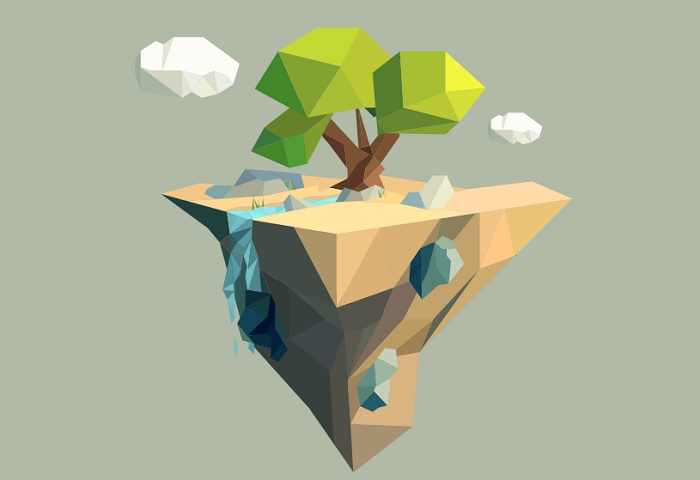
The encrypted cloud economy is expected to become the next new highland for investment in emerging markets, and the Metaverse is at the forefront of Web 3.0 Internet development. The Metaverse is a set of interconnected, experiential 3D virtual worlds in which people around the world can socialize in real time, eventually forming a persistent, user-controlled Internet economy that spans the digital and physical worlds.
For now, the Metaverse is still in its infancy, but many of the key components are already taking shape and are starting to transform every aspect of many industries, such as: e-commerce, media, entertainment, and even real estate. Grayscale has previously released the "Decentraland Report" and "Decentraland Tour", which introduced the blockchain-based virtual world - Decentraland in detail. By reading these two reports, you can understand the related concepts of the Metaverse more specifically.
Projects such as Decentraland are creating an open-world metaverse where users can log in to play games, earn MANA (Decentraland's native token, which users can use to purchase NFTs, including LAND or collectibles, and control the on-chain economic governance. vote), or create NFTs that give them rewards for the time they spend in the game.
secondary title
metaverse theme
The biggest function of the Internet is to connect people together. In the past three years, the development speed of Internet technology seems to be faster than ever before, and the way people interact with the Internet has also made a big leap. We will online community Divided into three key stages:
1. Web 1.0 - Netscape Connected Us
2. Web 2.0 - Facebook connects us to online communities
3. Web 3.0 - Decentraland connects us to a community-owned virtual world
Figure 1: Illustration of the evolution of online communities

We have crossed the three eras mentioned above, and today, people interact with each other and the range of media they are exposed to is constantly expanding. We have experienced first-hand the transformation of the organizational structure that connects people and the increasing maturity of computing infrastructure that people rely on. At the same time, user control of the web has also shifted, gradually shifting from big tech companies to communities.
Figure 2: Illustration of the main features of WEB 1.0, 2.0 and 3.0
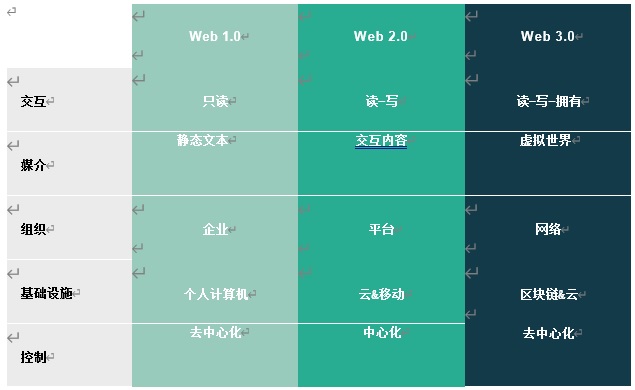
secondary title
Metaverse Market Opportunities
Today, we are turning more and more attention to digital activities, especially the younger generation, who spend about 1/3 of their lives (about 8 hours/day) watching TV, playing games or social media.
As we spend more time in the digital world, we will also spend more money in these digital areas, simply because everyone needs to establish their social status in these online communities .
Figure 3: Average hours per day spent on specific leisure activities in the US
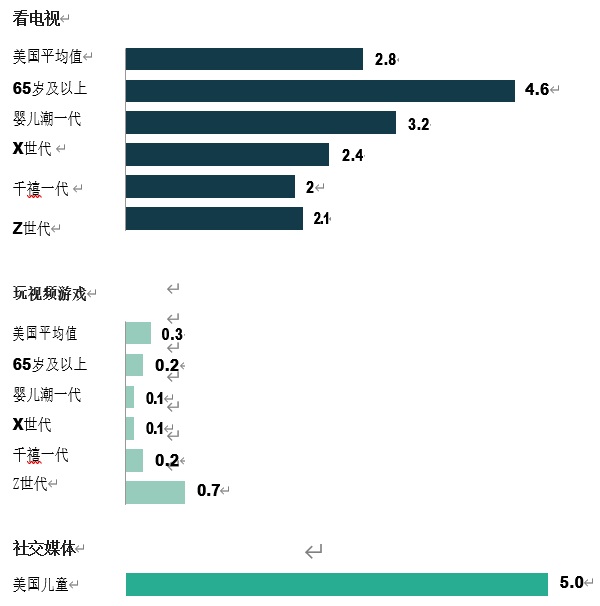
Our social lives and games are gradually merging into virtual worlds, creating a large and rapidly growing consumer economy of virtual goods. It is estimated that the revenue size of virtual gaming worlds could grow from about $180 billion in 2020 to about $400 billion in 2025.
The ongoing shift in monetization by game developers is a key driver in this growth trend. More and more players are starting to switch from paid games to free-to-play games. Developers can change the gameplay and make money by selling players in-game items or improving players' social status in the virtual world.
Figure 4: Global Virtual World Revenue Growth
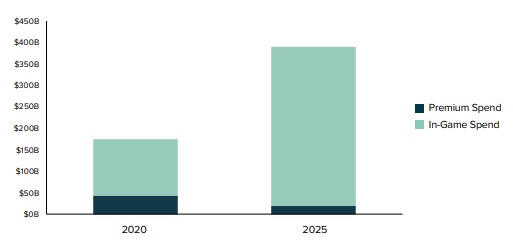
This transition is accelerating further with the transition from the closed corporate metaverse of Web 2.0 to the open encrypted metaverse network of Web 3.0:
• Web 2.0 closed corporate metaverse: centrally owned and controlled by large tech companies;
• Web 3.0 Open Cryptoverse: Owned and controlled by users worldwide.
Today, many gamers spend their money and time building digital fortunes in the closed corporate metaverse world of Web 2.0. But the problem is that most game developers fail to allow players to monetize their investment and efforts. The developer forbids players from trading items with other players and turns off this feature so players can't transfer their in-game wealth into the real economy.
Web 3.0 Open Encrypted Metaverse Network By removing the capital controls imposed by Web 2.0 platforms on these virtual worlds, this new paradigm allows users to own their digital assets as non-fungible tokens (NFTs) trade with other people. This kind of innovation can not only bring users a richer digital experience, but also create a new free market that can be monetized, and create an Internet-native economy in the physical world, this "creator economy" The evolution is now called Play-to-Earn.
Figure 5: Illustration of an Open Cryptoverse vs a Closed Enterprise Metaverse
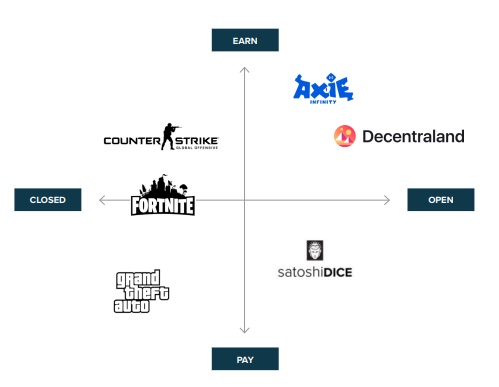
In the Metaverse, users dictate these types of seamless, real-world adjacent interactions across digital communities. Web 2.0 closed enterprise metaverse platforms may put users at a disadvantage compared to Web 3.0 open encrypted metaverse networks.
Mature Web 2.0 companies need to disrupt a business model by opening up the ecosystem and removing the competitive moat. We don't yet know how Facebook will expand its metaverse ambitions, but like other Web 2.0 companies, they will need to make this challenging transition under pressure to deliver quarterly results for shareholders.
Value has started to migrate naturally to Web 3.0, and gaming is one of the market segments with the most potential, but the potential of the entire metaverse extends far beyond gaming. It is estimated that the Metaverse will create trillions of dollars in revenue opportunities in advertising, social commerce, digital events, hardware, and developer/creator monetization.
Figure 6: Global Metaverse Potential Total Addressable Market
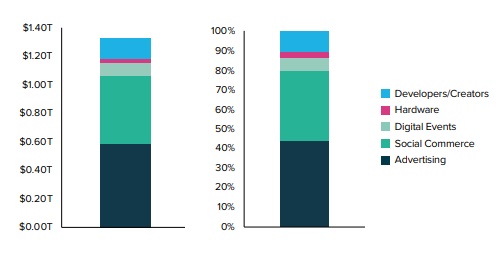 At present, Facebook has a market value of about 900 billion US dollars, the game industry has a market value of about 2 trillion US dollars, and Web 2.0 companies that may turn to the metaverse or face subversive risks have a market value of 14.8 trillion US dollars. The network's total market capitalization is only about $27.5 billion, which seems a little shabby.
At present, Facebook has a market value of about 900 billion US dollars, the game industry has a market value of about 2 trillion US dollars, and Web 2.0 companies that may turn to the metaverse or face subversive risks have a market value of 14.8 trillion US dollars. The network's total market capitalization is only about $27.5 billion, which seems a little shabby.
secondary title

Metaverse Web 3.0 Economy
The Web 3.0 crypto-metaverse is an emerging market virtual world economy in which complex portfolios of digital goods, services and assets are constantly evolving to create real-world value for users.
Early Web 3.0 metaverses are often built on blockchain computing platforms (Layer 1), with many parties contributing to the development of games and in-game items that can be freely traded on the blockchain .
Figure 8: Blockchain-based gaming stack

Users who buy these virtual goods are eager for a new e-commerce experience, and we can already see some examples of more popular commercial activities in Decentraland and other virtual world economies, such as:
• Art galleries, such as Sotheby's, have launched to allow owners to display and sell their digital NFT artworks at auctions.
• Business offices: Cryptocurrency businesses like Binance have begun building digital headquarters in the Metaverse, where employees can meet and collaborate.
• Games: Players can win MANA tokens.
• Advertising: Virtual ground floor owners can construct digital billboards for advertising to gamers for a fee.
• Sponsored content: such as the recently launched Atari Arcade, which includes games playable in Decentraland.
• Music venue: where DJs and musicians play music and hold concerts.
Figure 9: Metaverse experience

On the other hand, these Web 3.0 metaverse worlds are also part of the interconnected crypto cloud economy, and the potential scale of the crypto cloud economy is obviously larger. These decentralized protocols take advantage of interoperability and provide technical infrastructure to support the virtual metaverse. Economically, the main methods include:
• Payment network: Web 3.0 metaverse economies can use their own digital currency, such as MANA, or digital currency on the Layer 1 basic encryption cloud economic platform they build, such as Ethereum (ETH) or Solana (SOL).
• Decentralized Finance: Decentralized trading platforms allow users to trade in-game items, while lending platforms allow users to provide loans by staking their virtual land.
• NFT-Owned Goods: Players can purchase NFTs from other creators and bring them into other virtual worlds to display or sell.
• Decentralized governance: This is a brand-new legal framework. The "controlling power" of the digital economy is no longer exclusive to centralized companies. Users of the Web 3.0 metaverse can decide the rules of the virtual world by themselves and collectively own them.
• Decentralized Cloud: File storage solutions such as Filecoin provide a decentralized data village infrastructure solution for the Web 3.0 Metaverse world, while services such as Livepeer provide decentralized video transcoding for the virtual world infrastructure.
• Self-Sovereign Identity: Internet-native social reputation coins (we may call them "Creator Coins") data from other platforms may be transferred to the Metaverse and used for identity or credit scoring.
secondary title
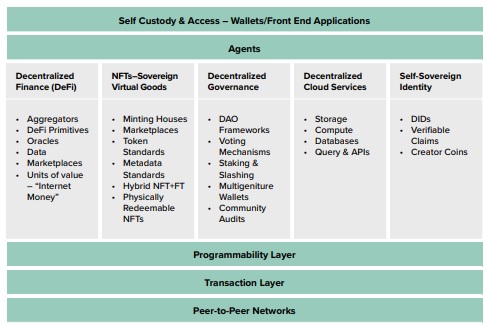
Metaverse Web 3.0 Indicators
The combination of these innovations has created a new online experience that has captivated users. In recent years, users of the Web 3.0 Metaverse virtual world have grown rapidly. Currently, the Web 3.0 Metaverse virtual world has nearly 50,000 users (based on active wallet data), an increase of about 10 times since the beginning of 2020.
Figure 11: Global Active Metaverse Wallet Growth Trend
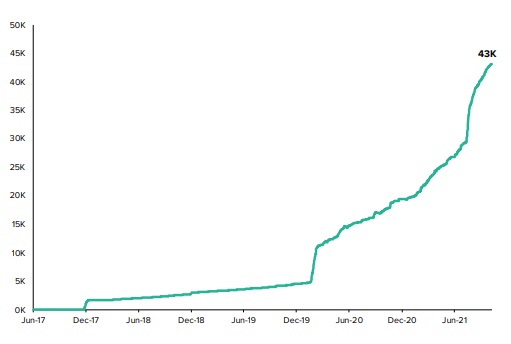
Compared with other Web 3.0 and Web 2.0 market segments, the user scale of Metaverse virtual world is still in the early stage of development, but if the subsequent growth rate can maintain the current trajectory, this emerging market segment may become mainstream.
Figure 12: Global user scale in different vertical fields
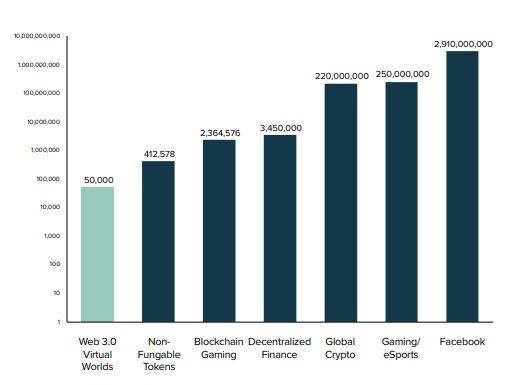
Each of us knows that developers, third-party creators, and users of the Internet-native crypto cloud economy in emerging markets create value in the real world, but now, they are turning their enthusiasm into the virtual world of the Web 3.0 metaverse. The total value of sales of Web 3.0 metaverse items such as virtual land, goods and services has exceeded $200 million.
In the past, Web 2.0 centralized companies controlled the online world, but now more and more people want to get rid of this control, and the Web 3.0 metaverse benefits from this, so innovation and productivity have been rapidly improved.
By removing capital controls and opening digital borders to free market capital, crypto virtual worlds have created multi-million dollar primary and secondary markets for content creators and asset owners.
Figure 13: Total Value of Global Metaverse Sales

In the third quarter of 2021, the total financing scale of the encryption industry reached 8.2 billion US dollars, of which the Web 3.0 and NFT market segments accounted for 1.8 billion US dollars. In the two fields of Web 3.0 and NFT, the highlights of blockchain games have attracted the most attention. In this field, about 1 billion US dollars of funds have been raised in 14 financing transactions, which is the vertical field that attracts the most funds.
Figure 14: Vertical industry investment activities in the third quarter of 2021
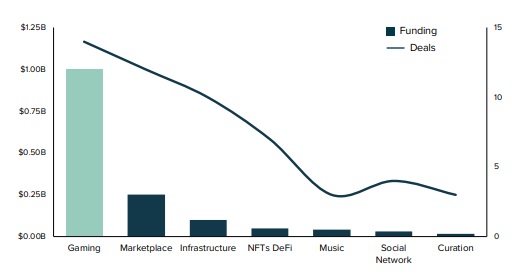
Summarize
Summarize
The Metaverse is a digital world beyond the internet as humans know it today.This vision of the future state of the web has the potential to revolutionize human social interaction, commerce, and the entire internet economy. For now, the Metaverse is still in its formative stages, but the Web 3.0 open virtual world encrypted network offers a glimpse into the future of the Internet.
Many businesses are looking to bring the Metaverse into people's daily lives, thus creating a huge market opportunity, with the potential to exceed $1 trillion in annual revenue in this area. Although the current market value of Web 2.0 companies is as high as 15 trillion US dollars, Metaverse still has certain competitiveness, so it also attracts companies such as Facebook to transform into Metaverse, and the entry of Facebook may become a model for other Web 2.0 technology giants and investors to emulate. catalyst.